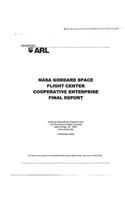
NASA Goddard Space Flight Center Cooperative Enterprise
Series:
The viability of a Capillary Heat Pump (CHP) concept using a Loop Heat Pipe evaporator and an eductor in a closed loop to reject heat at a higher temperature than it is acquired at with the goal of reducing spacecraft radiator area is examined. Eductor inefficiency resulting from the mixing of high velocity motive flow with low velocity suction flow may preclude spacecraft radiator area savings. T
NaN
VOLUME
English
Paperback

The viability of a Capillary Heat Pump (CHP) concept using a Loop Heat Pipe evaporator and an eductor in a closed loop to reject heat at a higher temperature than it is acquired at with the goal of reducing spacecraft radiator area is examined. Eductor inefficiency resulting from the mixing of high velocity motive flow with low velocity suction flow may preclude spacecraft radiator area savings. The utility of a CHP for thermal management may be limited to those missions where system mass is of secondary concern compared to system reliability, or where a heat pump is required to accommodate relatively high thermal rejection temperatures. Shearography techniques for nondestructive inspection and evaluation were examined for two unique applications. Shearography is shown to give good results in evaluating the quality of bonds holding lead tiles to the SWIFT spacecraft BAT gamma ray mask. Also, a novel technique was developed allowing specular objects to be inspected using shearography to evaluate bonding between the skin and core of a specular surface honeycomb structure. Large-scale bond failures are readily identified.Fredley, Joseph E. and Lysak, Daniel B.Goddard Space Flight CenterSHEAROGRAPHY; HEAT PUMPS; CAPILLARY PUMPED LOOPS; NONDESTRUCTIVE TESTS; SPACECRAFT RADIATORS; TEMPERATURE CONTROL; EVAPORATORS; FEEDBACK CONTROL; HONEYCOMB STRUCTURES; RELIABILITY; TILES; VIABILITY...
Price Comparison [India]
In This Series
Bestseller Manga
Trending NEWS




















